

Study Gems
Endocrine
Hypothyroidism is a condition characterized by underproduction of thyroid hormones by the thyroid gland, leading to a slowdown of the body's metabolism.
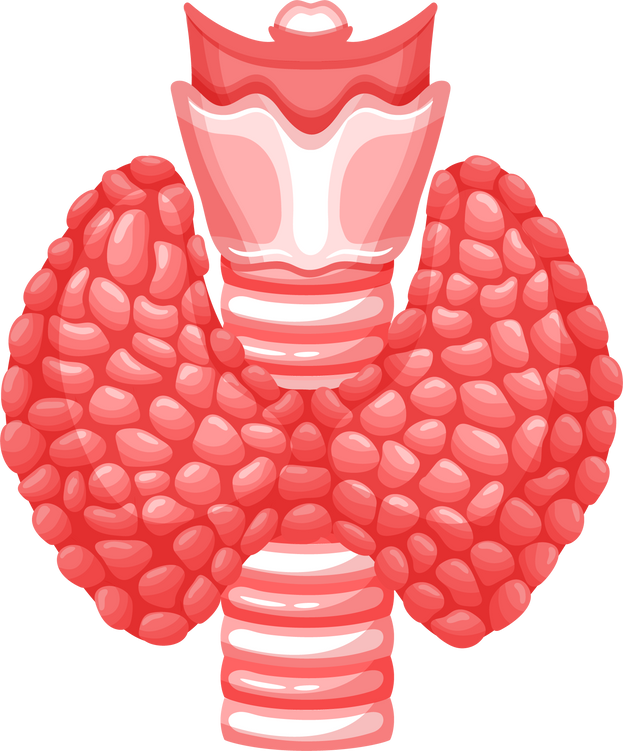
Sign & Symptoms
- Fatigue and sluggishness
- Increased sensitivity to cold
- Constipation
- Dry skin
- Weight gain
- Puffy face
- Hoarseness
- Muscle weakness
Cause
Hypothyroidism commonly results from Hashimoto's thyroiditis, an autoimmune condition where the immune system attacks the thyroid gland, leading to reduced hormone production. Other causes include iodine deficiency, thyroid surgery, radiation therapy, and certain medications
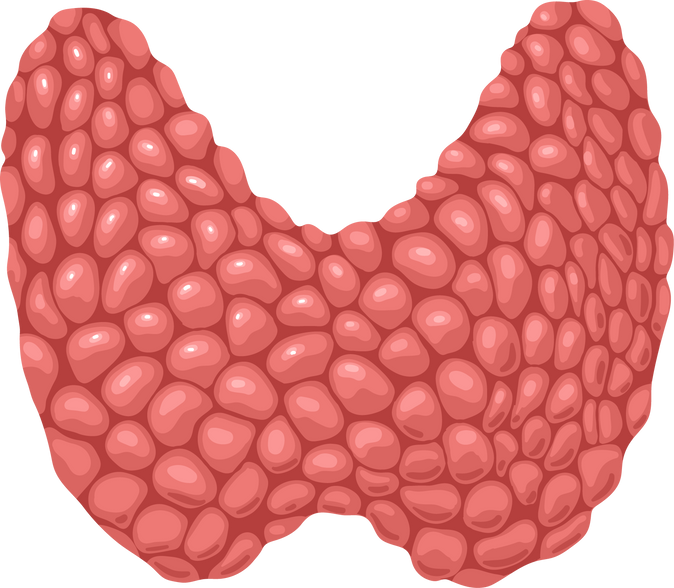
Diagnosis

- TSH (Thyroid-Stimulating Hormone) test. Primary screening test for hypothyroidism.
- T4 tests to measure the level of thyroid hormones.
- TSH and T3, T4
Treatment
- Treatment involves thyroid hormone replacement therapy to normalize hormone levels.
- Levothyroxine (Synthroid, Levoxyl) The most commonly prescribed medication for hypothyroidism
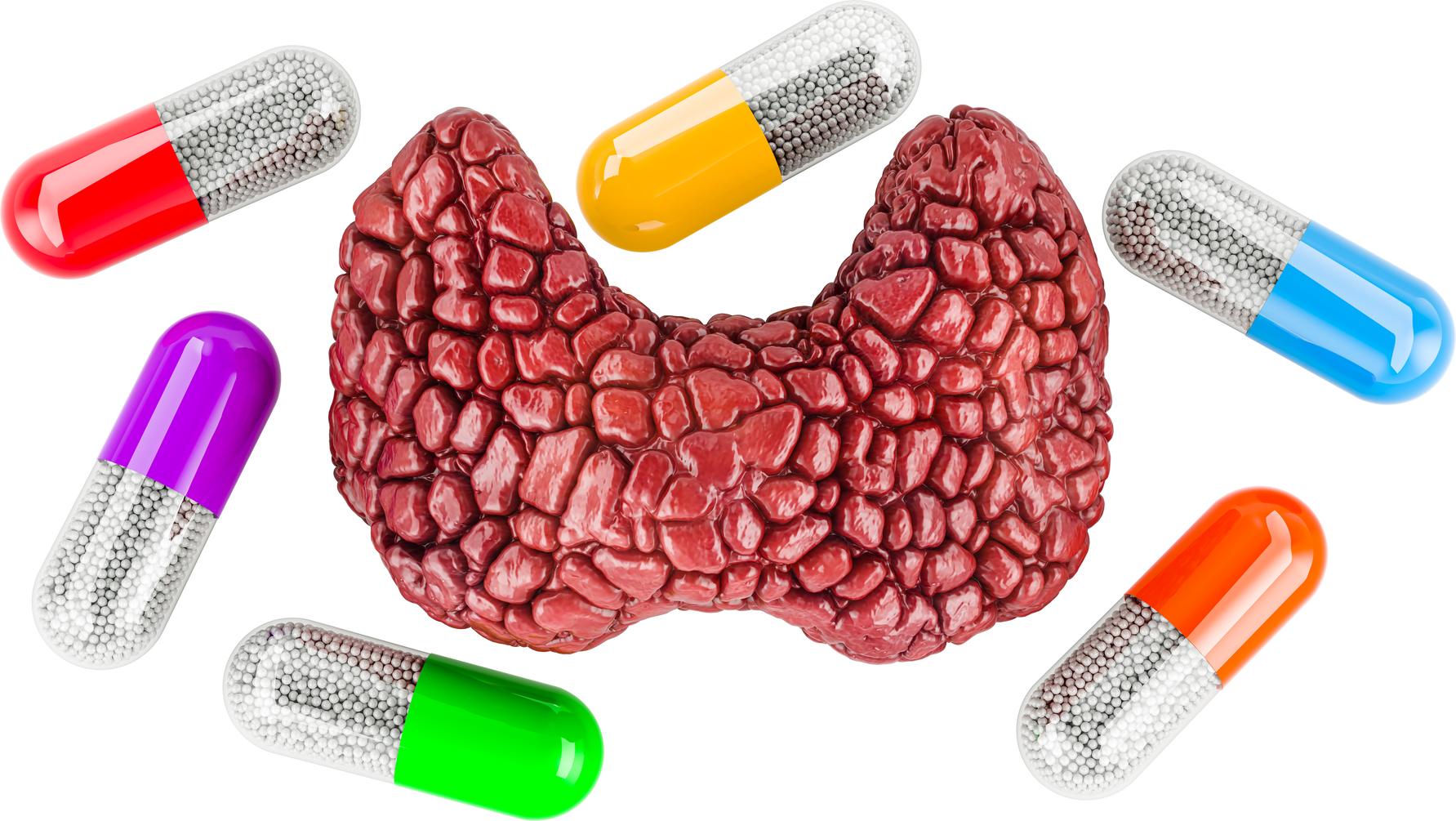
Clinical Features and Complications
- Myxedema - Severe form of hypothyroidism with intense cold intolerance and drowsiness followed by profound lethargy and unconsciousness.
- Goiter - Enlargement of the thyroid gland as it tries to produce more thyroid hormone.

PASchoolEssentials.com

Hyperthyroidism is a condition characterized by the overproduction of thyroid hormones by the thyroid gland, leading to an acceleration of the body's metabolism.
Sign & Symptoms
- Unintended weight loss
- Rapid or irregular heartbeat
- Increased appetite
- Nervousness, anxiety, and irritability
- Tremors in the hands and fingers
- Increased sensitivity to heat
Cause
Hyperthyroidism is primarily caused by Graves' disease, an autoimmune disorder where the immune system stimulates the thyroid to produce too much thyroid hormone. Other causes include toxic nodular goiter, thyroiditis, and excessive iodine intake.


Diagnosis
- Measure levels of thyroid hormones (T3, T4) and thyroid-stimulating hormone (TSH) T3, T4 and TSH
- Thyroid scan and uptake to assess the network and function of the thyroid gland
- Ultrasound of the thyroid to detect nodules or enlargement
Treatment
- Anti-thyroid medications to reduce hormone production - Propylthiouracil (PTU) or Methimazole
- Radioactive iodine therapy to destroy overactive thyroid cells
- Beta-blockers to manage symptoms - Propranolol
- Surgery (thyroidectomy) in severe cases
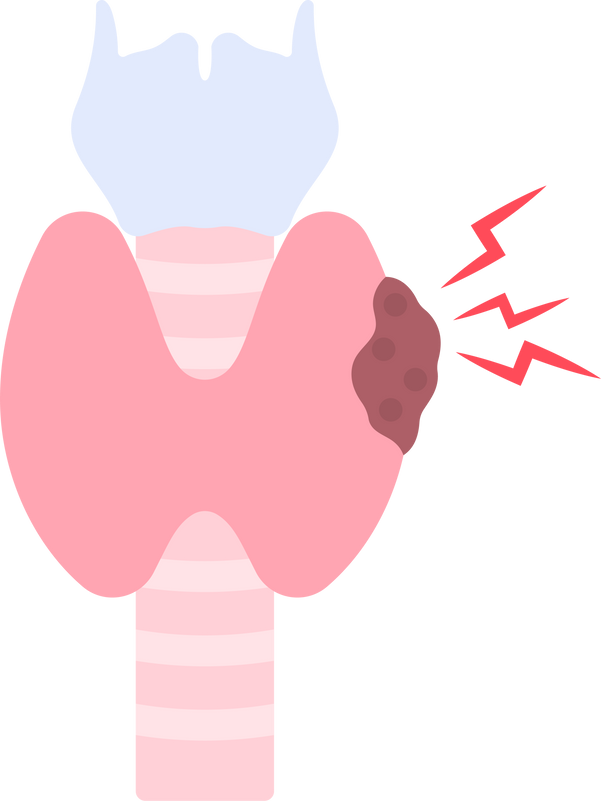

Clinical Features and Complications
- Goiter (enlarged thyroid gland)
- Ophthalmopathy, including bulging eyes (in Graves' disease)
- Pretibial myxedema (in Graves' disease)
- Thyrotoxic crisis (thyroid storm) as a severe, life-threatening emergency
PASchoolEssentials.com

Pheochromocytoma
Pheochromocytoma is a rare tumor of the adrenal glands, which secrete hormones that control heart rate, blood pressure, and other important bodily functions. These tumors can cause the adrenal gland to produce too much adrenaline and noradrenaline
Sign & Symptoms
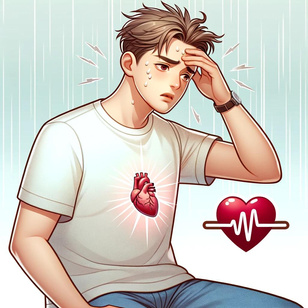
- High blood pressure
- Heavy sweating
- Tachycardia and/or palpitations
- Headaches
- Tremors
- Pallor (pale appearance)
- Anxiety or panic attacks
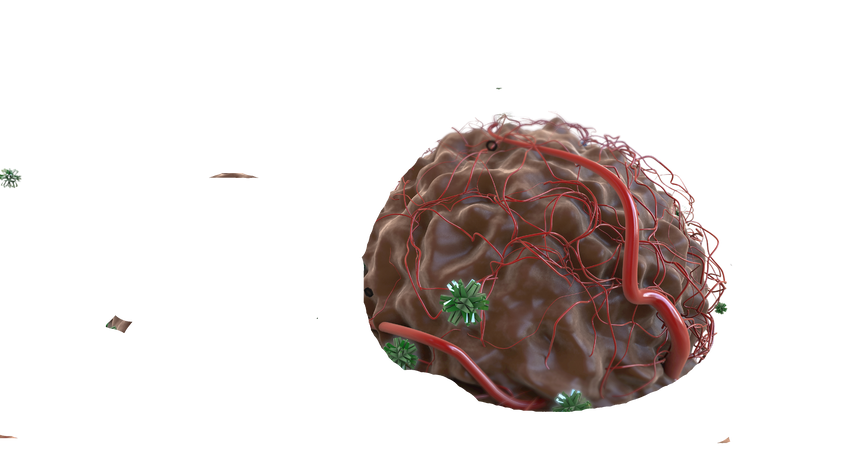
Cause
Pheochromocytomas are rare tumors that arise from the chromaffin cells of the adrenal medulla, responsible for producing epinephrine & norepinephrine
Diagnosis
- Blood and urine tests to measure levels of epinephrine & norepinephrine. Plasma free metanephrines
- Imaging tests (CT scan, MRI) to locate the tumor.
- MIBG scintigraphy, a type of imaging that uses radioactive iodine to locate the tumor.
Treatment
- Surgery to remove the tumor.
- Medication to control blood pressure and heart rate. Alpha-Adrenergic Blockers: Such as phenoxybenzamine or doxazosin
- Beta-Blockers: Only after adequate alpha-blockade has been established
- Radiation therapy or chemotherapy in cases where the tumor is malignant or cannot be surgically removed.
Clinical Features and Complications
- The "Rule of 10s": 10% are malignant, 10% are bilateral, 10% are extra-adrenal, 10% occur in children, and 10% are familial.
- Can be part of genetic syndromes such as Multiple Endocrine Neoplasia type 2 (MEN2).


PASchoolEssentials.com

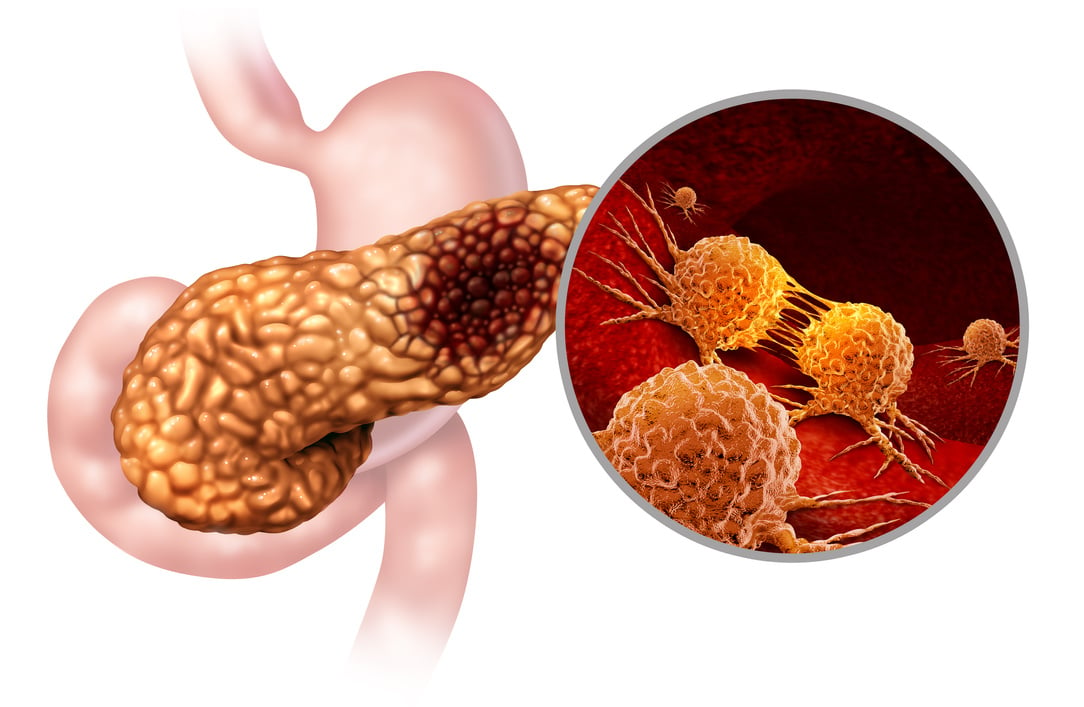
Multiple Endocrine Neoplasia Type 1 (MEN1)
MEN1 is a rare hereditary disorder characterized by the development of tumors in multiple endocrine glands, including the parathyroid glands, pancreatic islets, and pituitary gland. These tumors can be benign or malignant and often lead to overproduction of hormones.
Sign & Symptoms
- Hypercalcemia (high calcium levels in the blood) due to parathyroid tumors
- Stomach ulcers and abdominal pain due to gastrin-producing tumors in the pancreas (Zollinger-Ellison syndrome)
- Weakness, fatigue, and bone pain from hypercalcemia
- Symptoms related to pituitary tumors, such as vision problems or hormonal imbalances
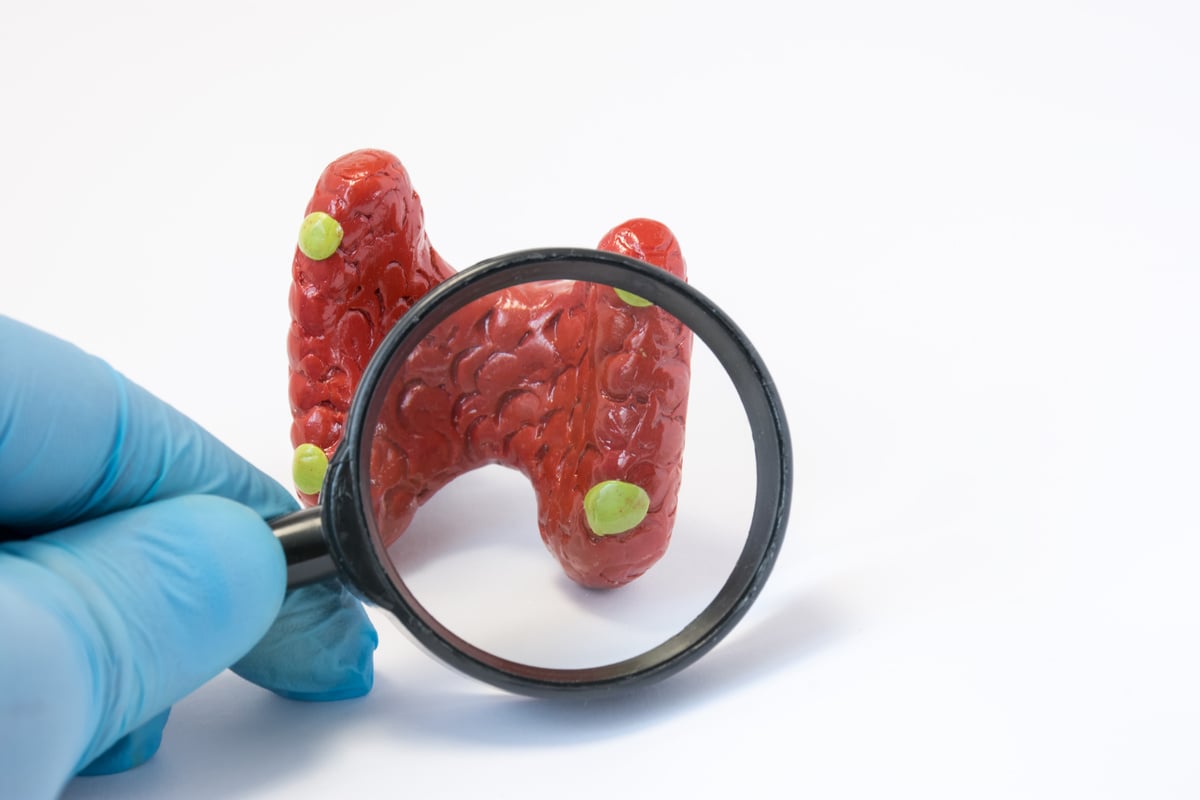
Cause
Caused by mutations in the MEN1 gene, leading to tumors in various endocrine glands.
Diagnosis
- Genetic testing for mutations in the MEN1 gene
- Blood tests to measure hormone levels (calcium, prolactin, gastrin, insulin)
- Imaging studies to locate tumors (MRI, CT scans)
- Ultrasound for thyroid and parathyroid gland
- Endoscopic ultrasound for pancreatic tumors
- Bone density test to evaluate for osteoporosis related to hyperparathyroidism
Treatment
- Primary Hyperparathyroidism is the most common feature of MEN1 and is usually treated with surgery to remove the overactive parathyroid glands.
- Gastrinomas, which can cause Zollinger-Ellison syndrome & requires medications to reduce stomach acid production
- Management of symptoms related to hormone overproduction, such as calcium and vitamin D supplementation for hypocalcemia.

Clinical Features and Complications
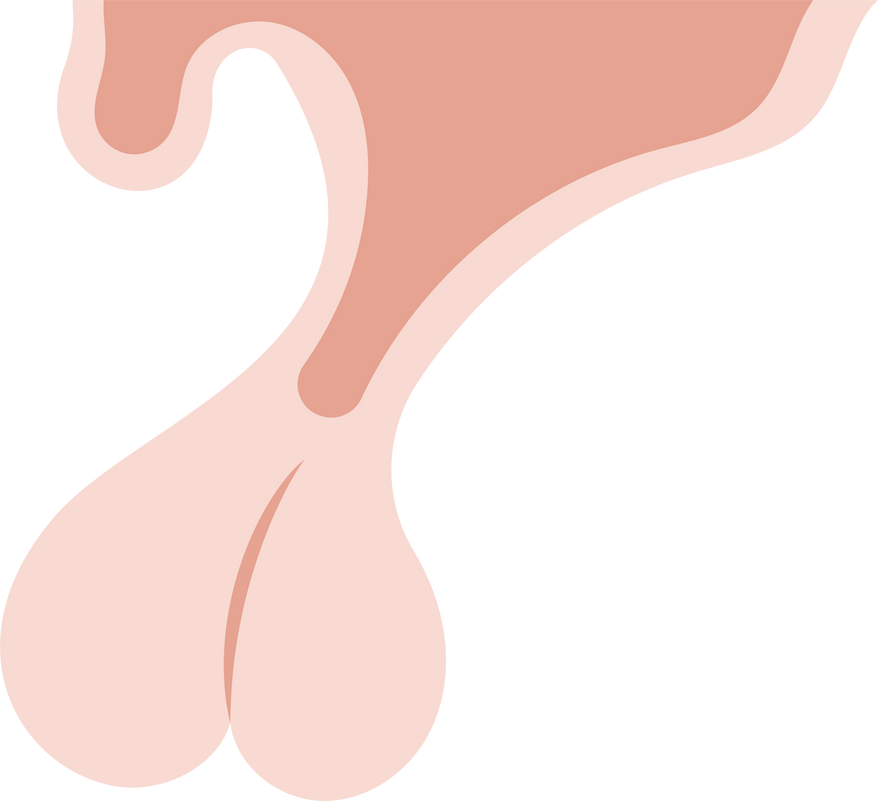
- Primary hyperparathyroidism due to parathyroid gland tumors is the most common manifestation.
- Pancreatic neuroendocrine tumors and pituitary tumors are also common.

PASchoolEssentials.com

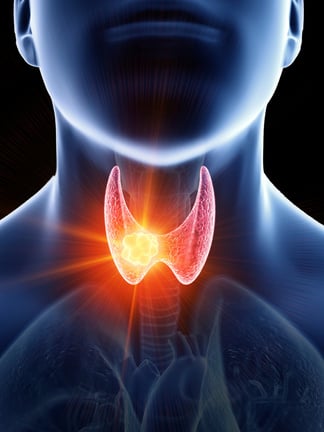
Multiple Endocrine Neoplasia Type 2 (MEN2)
MEN2 is a rare genetic disorder characterized by the development of medullary thyroid cancer (MTC), pheochromocytomas, and hyperparathyroidism. It's divided into two subtypes, MEN2A and MEN2B, each with specific clinical manifestations.
Sign & Symptoms
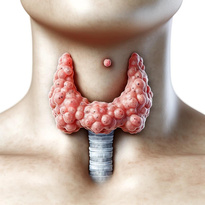
- Medullary Thyroid Cancer A lump in the neck, difficulty swallowing or breathing, and hoarseness.
- Pheochromocytoma High blood pressure, rapid heartbeat, severe headaches, sweating, and panic attack-like symptoms.
- Hyperparathyroidism (mainly in MEN2A): Weakness, fatigue, and bone pain due to elevated calcium levels.
Cause
MEN2 is caused by mutations in the RET proto-oncogene. These genetic alterations lead to the activation of pathways that promote cell growth, resulting in the development of tumors in various endocrine glands.
Diagnosis
- Genetic testing for RET gene mutations.
- Blood tests to measure calcitonin and calcium levels.
- Imaging tests (ultrasound, CT, MRI) for thyroid examination and to locate pheochromocytomas.
Treatment
- Prophylactic thyroidectomy (surgical removal of the thyroid) at an early age for patients with RET mutations to prevent medullary thyroid cancer.
- Surgery to remove pheochromocytomas.
- Monitoring and treatment for hyperparathyroidism.

Clinical Features and Complications
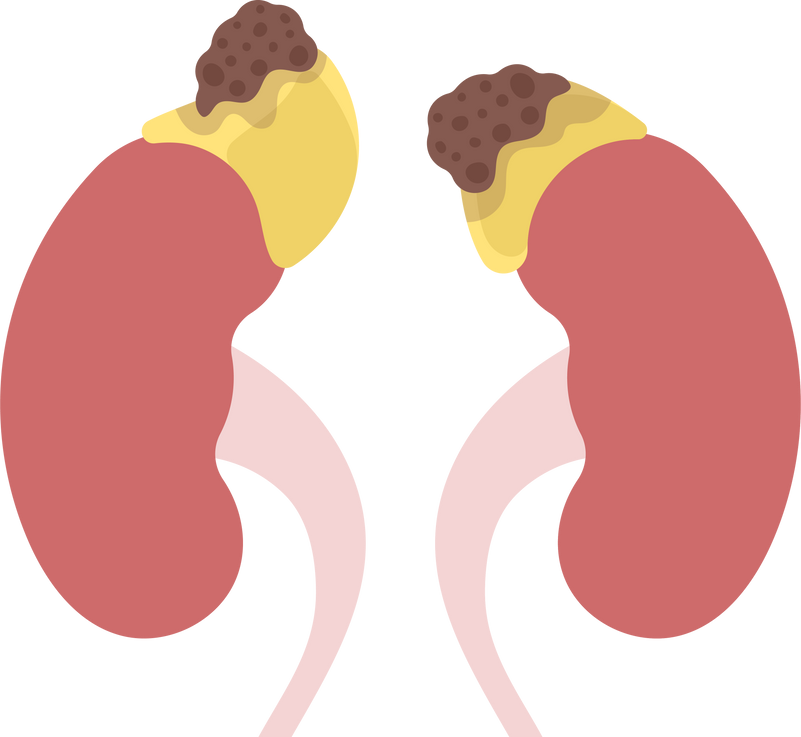
- MEN2A is more common and involves MTC, pheochromocytomas, and parathyroid adenomas or hyperplasia.
- MEN2B is less common and includes MTC, pheochromocytomas, marfanoid habitus, and mucosal neuromas, with patients often developing symptoms at a younger age.
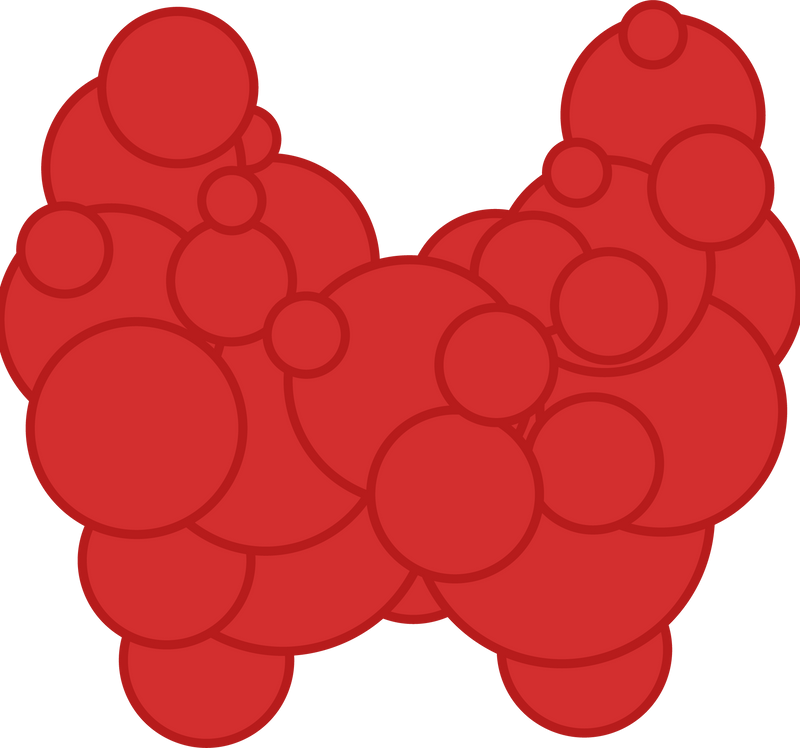
PASchoolEssentials.com
